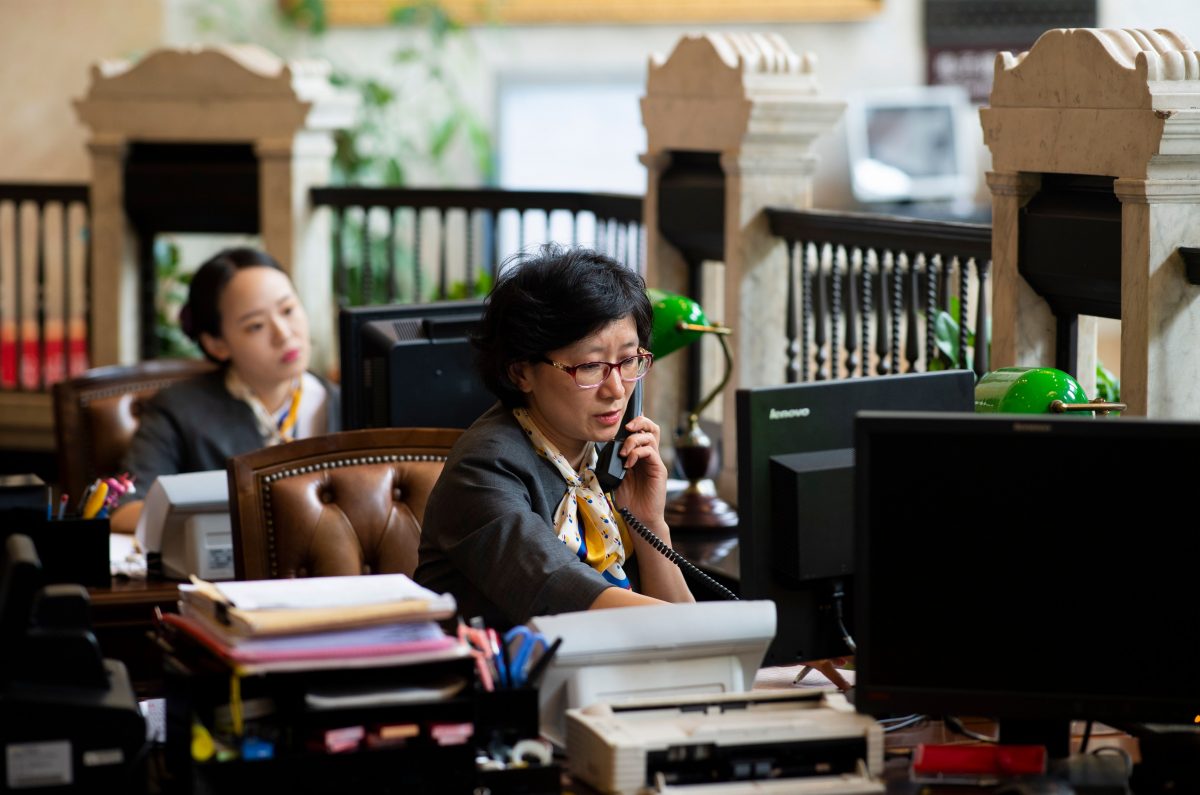Business
More Bank Runs Worry Chinese Regulators, Investors

News Analysis
Warning signs are flashing all over China’s banking sector.
Chinese regulators have seized or bailed out lenders at an unprecedented pace amid a surge in bad debt, while forcing banks to step up lending at increasingly lower interest spreads. That keeps banks in business, but it’s not a recipe for future longevity.
Increasing worries about the health of China’s financial system have hit investor confidence in banks and hurt recent capital raising efforts as well.
I wrote in August that after three Chinese bank bailouts in three months, more would follow. After a few months of calm, two local bank runs in November have added fuel to the fire.
Yingkou Coastal Bank is the latest to suffer a bank run. Yingkou faced a “flash mob” of customers who feared that the bank was on the verge of collapse. The Liaoning Province-based bank stacked bundles of yuan notes behind the counters of its branches in a show of confidence in the face of customers lining up to withdraw, according to a Reuters report. Local government officials also were sent to bank branches to calm customers and promise that the bank had sufficient liquidity.
The state bailout of Inner Mongolia regional lender Baoshang Bank earlier this year sparked a string of small bank bailouts, including Hengfeng Bank Co. and Bank of Jinzhou.
Yingkou had to sweeten financial incentives to entice its customers to stay. “To help repair the damage, Yingkou hiked its already high deposit interest rates,” Reuters reported.
The latest crisis followed an earlier November bank run at Henan Yichuan Rural Commercial Bank, a small bank based near Luoyang, in Henan Province.
Several Bank Runs in 2019
Yingkou’s crisis couldn’t have come at a worse time.
Small banks have become more dependent on deposit customers after Baoshang’s shocking bailout earlier this year sent interbank interest rates soaring. That means short-term funding for small banks became too expensive, and banks had to increasingly rely on customer deposits for funding.
When Baoshang Bank was taken over by Beijing regulators in May,…
Business
China Dismantles Prominent Uyghur Business Landmark in Xinjiang – Shia Waves

The Chinese government demolished the Rebiya Kadeer Trade Center in Xinjiang, affecting Uyghur culture and commerce, prompting criticism from activists amid concerns over cultural erasure and human rights violations.
Demolition of a Cultural Landmark
The Chinese government recently demolished the Rebiya Kadeer Trade Center in Urumqi, Xinjiang, a vital hub for Uyghur culture and commerce, as reported by VOA. This center, once inhabited by more than 800 predominantly Uyghur-owned businesses, has been deserted since 2009. Authorities forcibly ordered local business owners to vacate the premises before proceeding with the demolition, which took place without any public notice.
Condemnation from Activists
Uyghur rights activists have condemned this demolition, perceiving it as part of China’s broader strategy to undermine Uyghur identity and heritage. The event has sparked heightened international concern regarding China’s policies in Xinjiang, which have been characterized by allegations of mass detentions and cultural suppression, prompting claims of crimes against humanity.
Rebiya Kadeer’s Response
Rebiya Kadeer, the center’s namesake and a notable Uyghur rights advocate, criticized the demolition as a deliberate attempt to erase her legacy. Kadeer, who has been living in exile in the U.S. since her release from imprisonment in 2005, continues to advocate for Uyghur rights. She has expressed that her family members have suffered persecution due to her activism, while the Chinese government has yet to comment on the legal ramifications of the demolition.
Source : China Demolishes Uyghur Business Landmark in Xinjiang – Shia Waves
Business
Yakult Unveils Restructuring Plans for Its China Operations | ESM Magazine

Yakult reorganized its China operations, dissolving the Shanghai subsidiary while opening a new branch. Manufacturing now consolidates at Wuxi and Tianjin plants, aiming for enhanced efficiency and growth.
Yakult’s Business Reorganisation in China
Yakult has announced a significant reorganisation of its operations in China, aiming to enhance competitiveness and sustainability. The company has dissolved its wholly-owned subsidiary, Shanghai Yakult, which previously managed manufacturing and sales functions. This strategic move is expected to streamline its operations in the Chinese market.
New Branch and Manufacturing Adjustments
Yakult’s head office in China has established a new branch in Shanghai, transferring the sales division from Shanghai Yakult to this location. As of December 6, the branch has started selling various products, including Yakult and its light variants. Meanwhile, the manufacturing plant in Shanghai has ceased operations, with production capacity now absorbed by the Wuxi and Tianjin plants to ensure efficient supply.
Commitment to Growth
The company remains steadfast in its dedication to the Chinese market and is optimistic about future growth. Yakult reassured stakeholders that the reorganisation will have minimal financial impact and aims to enhance efficiency. Founded in 2005 in Shanghai, Yakult China currently employs approximately 2,216 individuals, reinforcing its commitment to customer health and expanding operations.
Source : Yakult Announces Reorganisation Of China Business | ESM Magazine
Business
UAE-China Trade Set to Surpass $100 Billion This Year – Arabian Business

UAE and China aim to surpass $100 billion in trade this year, highlighting their growing economic partnership and mutual interests in various sectors, as reported by Arabian Business.
UAE-China Trade Growth
The UAE and China are on track to see their trade surpass $100 billion in 2023. This significant milestone underscores the strengthening economic ties between the two nations. The robust growth is attributed to various sectors, including technology, agriculture, and logistics.
Bilateral Initiatives
In recent years, both countries have launched several initiatives aimed at enhancing bilateral trade. These efforts are designed to facilitate smoother cross-border transactions and promote investments. The UAE’s strategic location as a regional hub complements China’s expanding market reach, benefiting both economies.
Economic Impact
This burgeoning trade relationship is expected to create more job opportunities and stimulate economic growth in both countries. As the cooperation deepens, stakeholders anticipate additional advancements that will further solidify UAE-China ties in the global market.
Source : UAE and China trade to pass $100bn this year – Arabian Business






